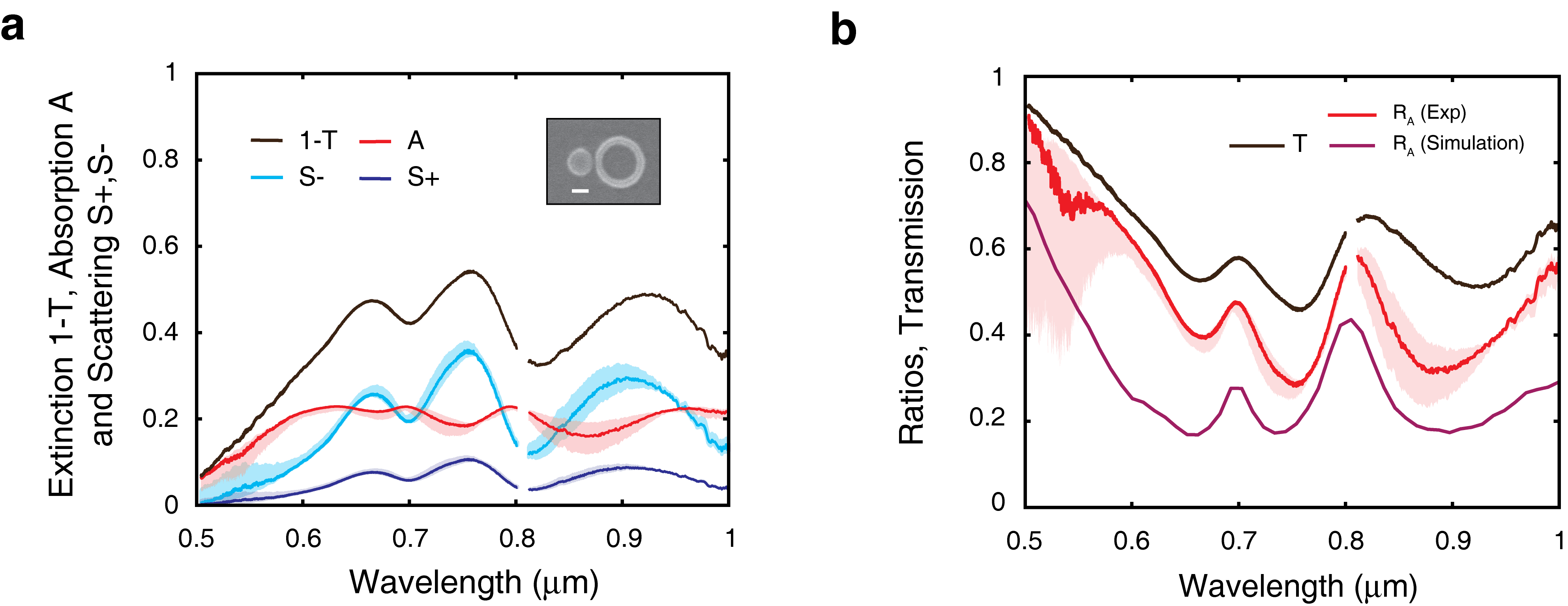
Spectral Interferometric Microscopy Reveals Absorption by Individual Optical Nano-Antennas from Extinction Phase
Optical antennas transform light from freely propagating waves into highly localized excitations that interact strongly with matter, which are exploited to accelerate the electronic transitions in nearby materials leading to enhanced light-matter interaction. Here we report a novel compact spectral interferometric microscopy (SIM) technique to expose the amplitude and phase response of individual optical antennas across an octave of the visible to near-infrared spectrum. Although it is a far-field technique, we show that knowledge of the extinction phase allows quantitative estimation of nanoantenna absorption, which is a near-field quantity. The absorption is an important parameter of any nano-antenna because it relates directly to optical intensity in the near field.
To verify our method we characterize a dimer consisting of a gold disk placed near a gold ring, known to exhibit Fano interference where near field interactions influence far-field extinction. This is believed to result in the enhancement of near field effects. Therefore, discerning the absorption of an individual ring-disk dimer will provide access to near field information that can directly explain these observations.
Our results (Figure 1) reveal that Fano interference only cancels a bright mode’s scattering, leaving residual extinction dominated by absorption, hence confirming experimentally the near-field enhancement of these antennas. This capability to discern scattering and absorption from the total extinction is extremely valuable for the entire gamut of applications exploiting metallic nano-antennas as it dictates how strongly light interacts with the near field of the antenna.

Figure 1. (a) A plot of transmission, forward scattering with the estimated backward scattering and absorption of the ring-disk dimer Inset – SEM of the structure. Bar = 200nm (b) Comparison of the ring-disk dimer’s transmission with the ratio of absorption
sylvain.gennaro10@imperial.ac.uk
Powered by Eventact EMS